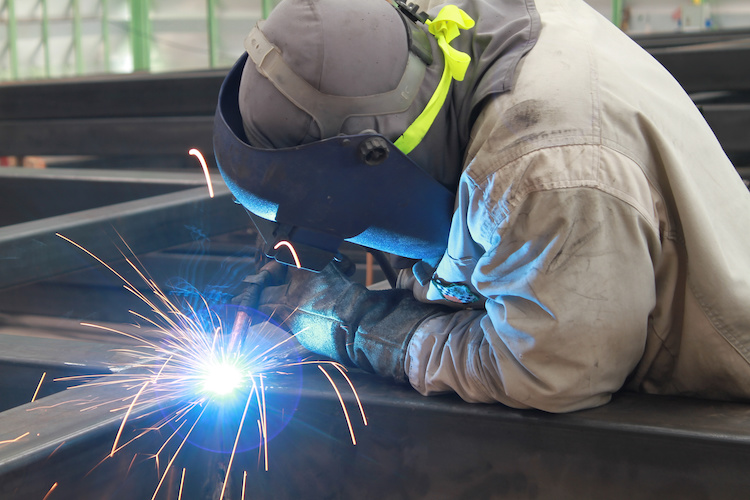Cutting-Edge Metal Fabrication Melbourne: Personalized Solutions for each Project
Cutting-Edge Metal Fabrication Melbourne: Personalized Solutions for each Project
Blog Article
Ingenious Patterns in Steel Manufacture: Enhancing Longevity and Precision
In the realm of steel manufacture, the pursuit of durability and accuracy has actually caused a wave of innovative trends that are improving the industry. From developments in welding innovations to the integration of robot automation in construction processes, the landscape of steel manufacturing is progressing quickly. High-strength alloy development, paired with the usage of 3D modeling and simulation software, is pushing the borders of what is achievable in terms of architectural integrity and accuracy. The expanding focus on lasting practices in steel manufacturing is not just driving efficiency yet also fostering an extra ecologically aware approach to manufacture. These trends are not just forming the existing but also laying the groundwork for the future of steel manufacture, guaranteeing more enhancements in durability and precision.
Advanced Welding Technologies
In the world of steel construction, the adoption of advanced welding technologies has significantly transformed the market's method to attaining exceptional quality and precision in structural welds. Advanced welding innovations, such as laser beam of light welding and friction stir welding, have actually arised as game-changers in the area. By leveraging these sophisticated welding methods, steel fabricators can raise the toughness, strength, and accuracy of their structural welds, satisfying the increasingly demanding demands of modern-day building tasks.
Robot Automation in Fabrication
Embracing robotic automation has come to be a foundation of modern steel manufacture practices, enhancing and streamlining procedures efficiency across the sector. Robots are transforming the way steel parts are manufactured, supplying unequaled accuracy and rate while reducing human mistake. These automated systems can take care of repeated jobs with regular precision, bring about higher top quality final result.
One key advantage of robotic automation in steel construction is the capacity to function all the time without fatigue, dramatically boosting production output. This continuous procedure decreases downtime and speeds up project timelines, inevitably saving expenses for manufacturers. Additionally, robots can be programmed to do elaborate jobs that may be dangerous or difficult for human workers, boosting security in the workplace.
In addition, robotic automation enables smooth combination with other digital innovations, such as computer-aided design (CAD) software application and Web of Things (IoT) systems (metal fabrication melbourne). This interconnected approach boosts interaction between various stages of construction, maximizing workflows and making certain real-time monitoring and control. As the steel construction sector proceeds to develop, robotic automation sticks out as a transformative force driving effectiveness and precision in producing processes

High-Strength Alloy Growth
The improvement of high-strength alloy development in steel fabrication is reshaping the industry's strategy to enhancing material sturdiness and efficiency. High-strength alloys are engineered to display exceptional mechanical residential or commercial properties, such as increased tensile toughness, sturdiness, and deterioration resistance contrasted to traditional steel grades. By incorporating these sophisticated alloys right into construction procedures, suppliers can generate elements that endure greater stress and anxiety degrees and extreme atmospheres, leading to even more trustworthy and long lasting end items.
One trick benefit of high-strength alloy growth is the ability to minimize product thickness without endangering structural integrity. This not just causes lighter-weight components however additionally adds to cost financial savings and enhanced effectiveness in fabrication and setting up procedures. Furthermore, the improved strength-to-weight proportion of these alloys enables the design and building of structures with greater load-bearing abilities while reducing total weight.
3D Modeling and Simulation Software
Developments in steel manufacture processes have been considerably propelled by the combination of sophisticated 3D modeling and simulation software program tools. These tools enable fabricators to produce thorough digital models of their tasks, enabling them to imagine the final product with precision before any physical work starts.

Lasting Practices in Steel Manufacturing
Including sustainable techniques right into steel manufacturing procedures is essential for reducing ecological effect and ensuring long-term source availability. One essential lasting method is the adoption of energy-efficient technologies to reduce greenhouse gas discharges during the steel production procedure. This consists of using eco-friendly energy sources, such as solar or wind power, to power steel plants and executing energy-efficient tools to maximize power usage.
An additional essential element of sustainable steel production is the accountable sourcing of resources. This involves guaranteeing that the iron ore and various other resources used in steelmaking are obtained from ecologically friendly and ethical sources. By promoting transparency in the supply chain and adhering to stringent ecological requirements, steel suppliers can decrease the adverse influences of source removal on regional environments and communities.

Verdict
In verdict, the innovative trends in steel manufacture such as innovative welding innovations, webpage robot automation, high-strength alloy growth, 3D modeling and simulation software program, and sustainable techniques are enhancing the durability and precision of steel items. These innovations are revolutionizing the steel fabrication industry by boosting quality, sustainability, and performance. It is clear that the her response future of steel construction hinges on embracing these sophisticated innovations to satisfy the demands of contemporary building and construction and production markets.
In the world of steel construction, the quest of sturdiness and precision has actually led to a wave of innovative patterns that are improving the industry.In the realm of steel fabrication, the fostering of sophisticated welding technologies has actually dramatically reinvented the industry's method to achieving exceptional top quality and accuracy in structural welds. As the steel fabrication industry proceeds to develop, robot automation stands out as a transformative force driving effectiveness and precision in making procedures.
Additionally, reusing and recycling steel scrap and waste materials play a substantial function in enhancing the sustainability of steel production. steel fixing.In conclusion, the cutting-edge trends in steel fabrication such as advanced welding modern technologies, robotic automation, high-strength alloy development, 3D modeling and simulation software application, and sustainable practices are enhancing the longevity and precision of steel products
Report this page